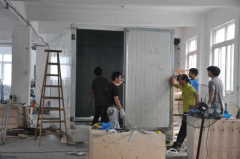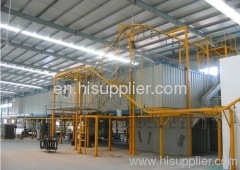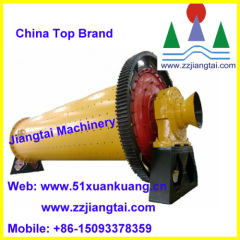





powder coating line manufacturer
| Min. Order: | 1 Piece/Pieces |
|---|---|
| Trade Term: | FOB |
| Payment Terms: | T/T, WU |
| Supply Ability: | 2Piece/Pieces Per Month |
| Place of Origin: | Zhejiang |
Company Profile
| Location: | Hangzhou, Zhejiang, China (Mainland) |
|---|---|
| Business Type: | Manufacturer, Distributor/Wholesaler |
Product Detail
| Model No.: | COLO-L |
|---|---|
| Means of Transport: | Ocean |
| Brand Name: | colo |
| line: | Electrostatic Spraying |
| Services: | Design, Manufacture, Installation |
| production: | Automatic |
| Certification: | CE |
| Material / Metal: | bucket |
| after-sale service: | worldwide |
| output: | according clients request |
| line speed: | adjusted |
| how to order: | sent email to us please |
| Specification: | Customized |
| Production Capacity: | 2Piece/Pieces Per Month |
| Packing: | wood box or carton box |
| Delivery Date: | 15 -30days |
Product Description
powder coating line manufacturer:
1.convenient color change
2.excellent quality
3.competitive price
Powder coating is a dry finishing process,using finely ground particles of pigment andresin that are generallyelectrostatically charged and sprayed ontoelectrically grounded parts.The charged powder particles adhere to theparts and are held there untilmelted and fused into a smooth coating ina curing oven. Before coating,the parts to be coated are firstpretreated similarly to conventionalliquid coated parts. Thepretreatment process is normally conducted inseries with the coatingand curing operatios.
Thereis essentially two common ways of applyingpowder coating: byelectrostatic spray and by fluidized bed powdercoating. There areseveral other processes that have been developed, butthey are far lessused. These include flame spraying, spraying with aplasma gun, airlesshot spray, and coating by electophoretic deposition.
To get an overview of the technology used in the powder coating industry click on the items below:
pretreatment
Electrostatic Spray
curing
Pretreatment.
Phosphating,or conversion coating, is theapplication of an iron or zinc phosphatecoating to the substrate.Conversion coating can be a very critical partof the pretreatmentprocess, adding significantly to the performance ofthe finished coating.A phosphate coating converts the metal substrateto a uniform, inertsurface, which improves bonding, minimizes thespread of oxidation if thecoating is scratchedand improves the overallcorrosion resistance of thefinal part.
Aconversion coating can be iron, zinc,polycrystalline, chromate, ormanganese phosphate film. They aredeveloped on both ferrous (ironbased) and non-ferrous surfaces (zinc,aluminum, terne and manganese).Parts are subjected to an acidic bath anda chemical conversion forms acomplete film on the part surface,changing the chemical and physicalnature of the metal surface.
Henkelhas introduced a big breakthrough in surfacetreatment: Bonderite NT –a new surface pretreatment which isconsiderably more efficient, lesscomplicated and more cost-effectivethan conventional iron phosphating
Electrostatic Spray
Electrostatic spray powder coating uses a powder-airmixture from a small fluidized bed in a powder feed hopper. Insomecases, the feed hoppers vibrate to help prevent clogging or clumpingofpowders prior to entry into the transport lines. The powder issuppliedby a hose to the spray gun, which has a charged electrode in thenozzlefed by a high voltage dc power.
Electrostaticpowder spray guns direct the flow ofpowder; control the depositionrate; control the pattern size, shape, anddensity of the spray; andcharge the powder being sprayed .The sprayguns can be manual(hand-held) or automatic, fixed or reciprocating, andmounted on one orboth sides of a conveyorized spray booth. Electrostaticspray powdercoating operations use collectors to reclaim over-spray.This reclaimedpowder is then reused, adding significantly to the powdercoating's high transfer efficiency.
Thereare various gun designs that mainly differ inthe method of applyingelectrostatic charge to the powder. In some cases,the powder iselectrostatically charged by friction. The advantage isthat the powderis free to deposit in an even layer over the entiresurface of the part,and deposition into recesses is improved.
The film thickness is dependent on the powderchemistry, preheat temperature, and dwell time. Film thicknesses of (40 -60 µm) in case of plain powder ( 80 – 100 µm) in case of texture cangenerally be applied on products.
Curing
Whena thermoset powder is exposed to elevatedtemperature, it begins tomelt, flows out, and then chemically reacts toform a higher molecularweight polymer in a network-like structure. Thiscure process, calledcross linking, requires a certain degree oftemperature for a certainlength of time in order to reach full cure andestablish the full filmproperties for which the material was designed.Normally the powderscure at 200°C (390°F) in 10 minutes. The curingschedule could vary according to the manufacturer's specifications.
The application of energy to the product to be cured can be accomplished by convection cure ovens or infrared cure ovens.









